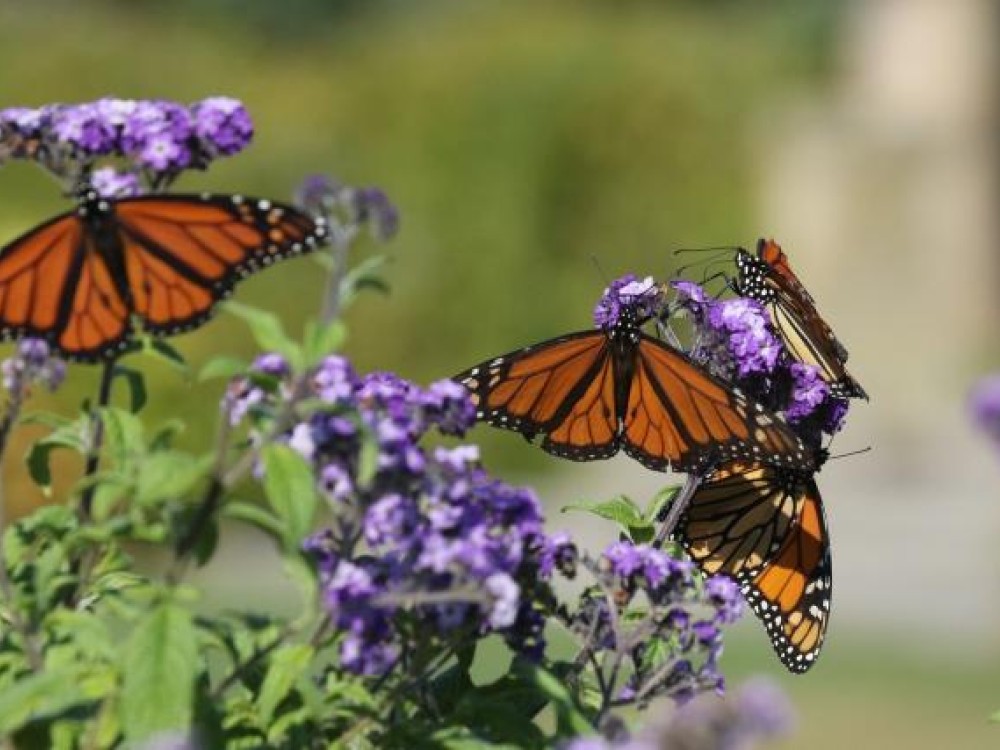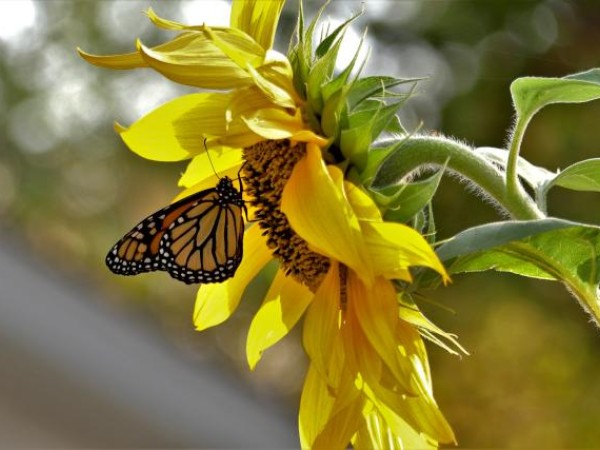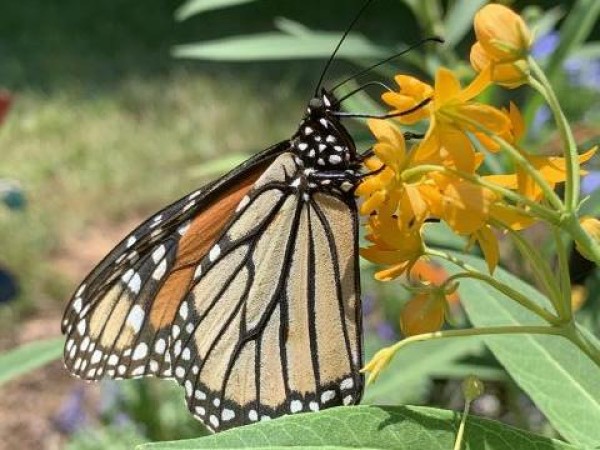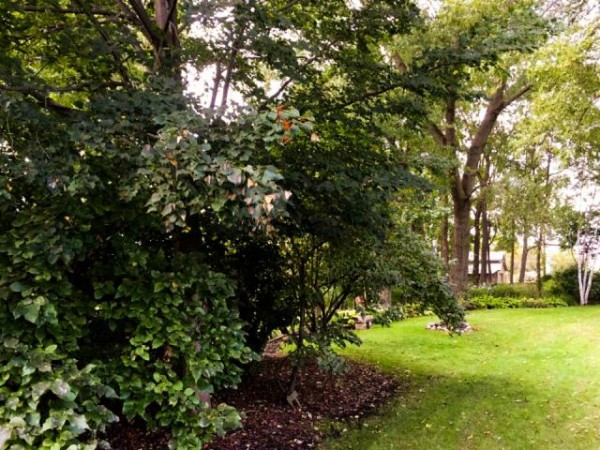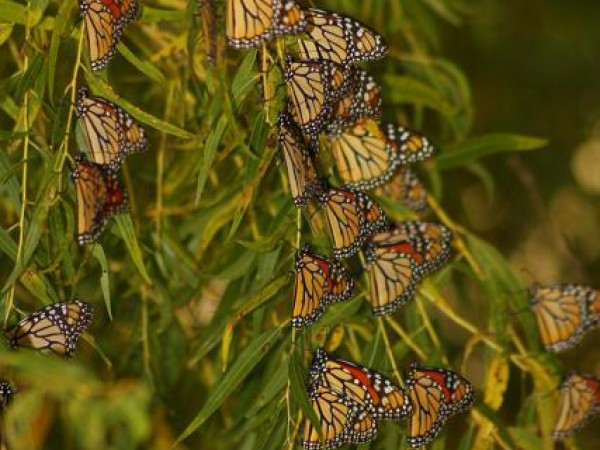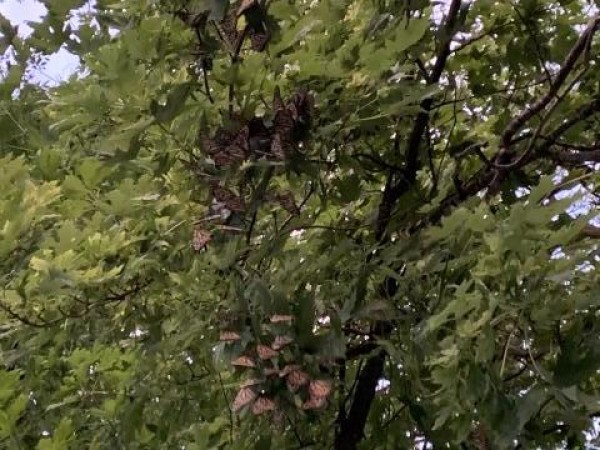Good Roosting Weather
Monarch Adult Sightings Widely Distributed
From Canada to the Gulf states and into Mexico, Journey North observers are submitting adult monarch sightings.
From Winnipeg, MB: Mike reported, "A group of late blooming Sunflowers in our back yard, spotted this Monarch on one of them late in the day." (09/22/2019)
From Bay Minette, AL: Starla observed, "Two monarchs are enjoying my butterfly garden." (09/21/2019)
Unique Sightings
From Granadilla, San José, Costa Rica: From her observation in August, Tania just submitted a "first time" sighting of a monarch butterfly in Costa Rica. (08/23/2019)
CORRECTION: From Woodburn, IN: Holly "visited a roost that’s been on [a] farm since August 24 and saw hundreds hanging...[and] had the great privilege to spot a [white] monarch..." (09/18/2019) link to report
Roosts Remaining For Several Weeks
Monarch butterflies only migrate during the day and gather at dusk in roosts. Most roosts last for only a night or two. In other places, these gatherings may last as long as two weeks. This year, Journey North observers are consistently reporting roosts lasting for more than two weeks.
From Springville, IA: Cammie observed "a roost of about 100 monarchs since September 1." (09/18/2019) link to report
From Monona, IA: Jim counted "close to 1400...the longest monarchs have roosted in numbers like this since we started tagging in 1994." (09/24/2019)
Roosts in Kansas, Iowa and Nebraska. First Roost Sighing in Texas.
From Claflin, KS: Pam counted "about 450 monarchs roosting." (09/24/2019)
From Oakland, NE: Julie "tagged the last 25 of my 500 monarchs...There were probably 300 more tonight roosting...numbers are way up from last year here in Nebraksa...I ran out of tags." (09/20/2019)
From Dalhart, TX: Debbie exclaimed, "A spectacular sight!" (09/25/2019) link to report
Atlantic Coastal Roosts Still North of Virginia
From Fire Island, NY: Barbara observed "about 55 for about one hour...Spotted several small roosts with 5-10 monarchs...There is limited nectar sources in the immediate area, however within a 5 mile radius, there is significant nectar." (09/18/2019)
"Trees Are Absolutely Full" Video Footage
Take a look at this incredible YouTube video submitted by Jessica from Woodburn, IN.
Peak Migration
Over the years, sightings contributed by citizen scientists have revealed that the monarchs follow two distinct flyways as they travel to Mexico. Notice that this year's peak migration map is beginning to show the predicted pattern.
Watch the Weather -- And Keep Reporting To Journey North
Wind affects when and where monarchs can fly. Use this live map to predict flights.
When submitting Roost observations to Journey North, please include the following information if possible:
-
Time of day you first saw the roost
-
Date the roost first formed
-
Nectar sources nearby like clover, alfalfa fields or wildflowers
-
Overnight temperatures
-
Wind direction. Were the monarchs shielded from the wind in this location?
-
Photos
- How you counted or estimated the number of adults roosting
Thank you for your contribution to our collective understanding of monarch migration.
